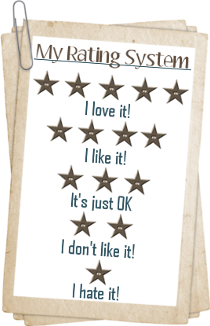James D. Livingston
Sometimes it’s a long time between thinking of a book and actually writing it. It was over 30 years ago that I was doing genealogy research on my Livingston ancestors, searching the New York Times archives in a library. (This was long before Google and the web.) After dutifully compiling the birth, marriage, and death dates for many Livingstons, I suddenly came across a Mary Alice Livingston who was put on trial in 1896 for the murder of her mother. That sounded interesting! I browsed through many old newspapers, and the more I learned about Mary Alice, the more I felt that her story would make a great book some day. But I had a full-time job, and didn’t have time then for all the necessary research and writing. When I finally retired from my career in physics a few years ago, I finally had the time to write the book I had imagined 30 years earlier. The result is Arsenic and Clam Chowder: Murder in Gilded Age New York.
As you can tell from the book’s title, the method of Mary Alice’s alleged matricide was the adding of arsenic, the “king of poisons,” to a simple bowl of clam chowder. The chowder was delivered to the victim, Evelina Bliss, by her ten-year-old granddaughter Gracie. After Evelina;s death, the police worked quickly, and arrested Mary Alice in her mourning clothes immediately after attending her mother’s burial. Added to the sensation of the case was the fact that Mary Alice was at the time an unwed mother of three and pregnant with a fourth, who would be born in prison. If Mary Alice were convicted of murder, she would be the first woman to be executed in the new-fangled electric chair. Mary Alice’s trial ran into its seventh week, until then the longest trial in New York history. The book inspired my song “Who Put the Arsenic in Mrs. Bliss’s Chowder?” which you can find by clicking HERE. In Mary Alice’s trial, the prosecution and defense had very different answers to that question.
As I read more and more period newspapers, I became more and more fascinated not only with Mary Alice’s life and trial, but also with the story’s setting – New York in the Gilded Age. The arrival of skyscrapers, motion pictures, and automobiles in the 1890s, plus the colorful activities of personalities of the period like Teddy Roosevelt, Thomas Edison, and Anthony Comstock, provided a fascinating backdrop to the basic story of a dysfunctional family and a dramatic murder trial. By the time I finished researching and writing Arsenic and Clam Chowder, I was happy that when shaking my family tree over 30 years ago, I discovered the fascinating story of my black-sheep cousin Mary Alice. So if you are tempted to study your family own history, I hope that you find a few black sheep. Sometimes they are more interesting than all those white ones.
About the author ~
Born June 23, 1930, in Brooklyn, New York, James D. Livingston studied engineering physics at Cornell University and received a PhD in applied physics from Harvard University in 1956. After retiring from General Electric after a lengthy career as a research physicist, he taught in the Department of Materials Science and Engineering at MIT. Although a physicist by profession, he has long had a strong interest in American history, and is the coauthor, with Sherry H. Penney, of A Very Dangerous Woman: Martha Wright and Women’s Rights.
You can find out more about James and Arsenic and Clam Chowder at www.jamesdlivingston.net.
Arsenic and Clam Chowder recounts the sensational 1896 murder trial of Mary Alice Livingston, a member of one of the most prestigious families in New York, who was accused of murdering her own mother, Evelina Bliss. The bizarre instrument of death, an arsenic-laced pail of clam chowder, had been delivered to the victim by her ten-year-old granddaughter, and Livingston was arrested in her mourning clothes immediately after attending her mother’s funeral. In addition to being the mother of four out-of-wedlock children, the last born in prison while she was awaiting trial, Livingston faced the possibility of being the first woman to be executed in New York’s new-fangled electric chair, and all these lurid details made her arrest and trial the central focus of an all-out circulation war then underway between Joseph Pulitzer’s World and Randolph Hearst’s Journal.
The story is set against the electric backdrop of Gilded Age Manhattan. The arrival of skyscrapers, automobiles, motion pictures, and other modern marvels in the 1890s was transforming urban life with breathtaking speed, just as the battles of reformers against vice, police corruption, and Tammany Hall were transforming the city’s political life. The aspiring politician Teddy Roosevelt, the prolific inventor Thomas Edison, bon vivant Diamond Jim Brady, and his companion Lillian Russell were among Gotham’s larger-than-life personalities, and they all played cameo roles in the dramatic story of Mary Alice Livingston and her arsenic-laced clam chowder. In addition to telling a ripping good story, the book addresses a number of social and legal issues, among them capital punishment, equal rights for women, societal sexual standards, inheritance laws in regard to murder, gender bias of juries, and the meaning of “beyond a reasonable doubt.”
Read the Excerpt!
Matricide is a particularly heinous crime, and the arrest of Mary Alice in mourning clothes immediately after attending her mother’s burial drew special notice from the press. That the allegedly poisonous chowder was delivered to the victim by her ten-year-old granddaughter added extra interest; experience had shown that stories involving children always drew considerable attention, particularly among women readers. There was also a substantial inheritance involved, and Mary Alice was a member of the prominent and socially prestigious Livingston family. Money and New York society were reliable attention getters. On top of all this, Mary Alice was the mother of three illegitimate children and pregnant with a fourth. Scandal piled upon scandal. Although this was not the first time that Mary Alice had drawn the attention of the New York newspapers, her 1896 trial for the murder of her mother was to dominate the news for many weeks in the era of “yellow journalism” when papers focused even more attention than usual on sensational stories. Hundreds of thousands of readers in New York and well beyond would become very familiar with the story of Mary Alice, the clam chowder she sent to her mother, and the death of Evelina Bliss.Visit James on the rest of his tour ~
Thursday, October 14
Interviewed at The Hot Author Report
Friday, October 15
Interviewed at Blogcritics
Tuesday, October 19
Book reviewed at The Book Connection
Wednesday, October 20
Book reviewed A Room without Books is Empty
Thursday, October 21
Interviewed at Examiner
Monday, October 25
Book reviewed at My Favorite Things
Tuesday, October 26
Book reviewed at Broken Teepee
Wednesday, October 27
Book reviewed at Christy’s Book Blog
Friday, October 29
Book reviewed at A Moment with Mystee
Monday, November 1
Interviewed at Beyond the Books
Tuesday, November 2
Guest blogging at Thoughts in Progress
Wednesday, November 3
Book reviewed at Just One More Paragraph
Thursday, November 4
Book reviewed at Carpe Libris
Friday, November 5
Book reviewed at Chrissy’s World of Books
Monday, November 8
Book reviewed at A Bookish Mom
Wednesday, November 10
Guest blogging at Writing Daze
Monday, November 15
Book reviewed at Must Read Faster
Wednesday, November 17
Book reviewed at In the Next Room
Thursday, November 18
Book reviewed at Confessions of an Overworked Mom
Friday, November 19
Book Reviewed at Rundpinne
Tuesday, November 23
Book Reviewed at A Few More Pages
Friday, November 26
Book spotlighted at Book Tours and More























